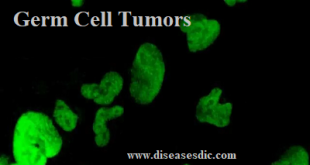What is lymphadenitis?
Lymphadenitis is the medical term for enlargement in one or more lymph nodes, usually due to infection. Lymph nodes are filled with white blood cells that help your body fight infections. When lymph nodes become infected, it’s usually because an infection started somewhere else in your body. Rarely, lymph nodes can enlarge due to cancer. You have about 600 lymph nodes in your body, but normal lymph nodes may only be felt below your jaw, under your arms, and in your groin area.
A normal lymph node is small and firm. When lymph nodes become infected, they usually increase in size, become tender, and maybe felt in other areas of your body during a physical exam. Infections that spread to lymph nodes are usually caused by bacteria, a virus, or a fungus. It is important to learn how the infection spread into your lymph nodes so that the right treatment can be started.
Types of lymphadenitis
Lymphadenitis can be one of 2 types:
Localized lymphadenitis. This is the most common type. Localized lymphadenitis involves one or just a few nodes that are close to the area where the infection started. For example, nodes enlarged because of a tonsil infection may be felt in the neck area.
Generalized lymphadenitis. This type of lymph node infection occurs in two or more lymph node groups. It may be caused by an infection that spreads through the bloodstream or another illness that affects the whole body.
Pathophysiology of lymphadenitis
Increased lymph node size may be caused by the following:
- Multiplication of cells within the node, including lymphocytes, plasma cells, monocytes, or histiocytes
- Infiltration of cells from outside the node, such as malignant cells or neutrophils
- Draining of an infection (eg, abscess) into local lymph nodes
Causes
- The lymph system (lymphatics) is a network of lymph nodes, lymph ducts, lymph vessels, and organs that produce and move a fluid called lymph from tissues to the bloodstream.
- The lymph glands, or lymph nodes, are small structures that filter the lymph fluid. There are many white blood cells in the lymph nodes to help fight infection.
- Lymphadenitis occurs when the glands become enlarged by swelling (inflammation), often in response to bacteria, viruses, or fungi. The swollen glands are usually found near the site of an infection, tumor, or inflammation.
- Lymphadenitis may occur after skin infections or other infections caused by bacteria such as streptococcus or staphylococcus. Sometimes, it is caused by rare infections such as tuberculosis or cat scratch disease (Bartonella).
What are the risk factors for lymphadenitis?
Risk factors for lymphadenitis depend upon the reason for the inflammation and the underlying cause of lymphadenitis. Frequent infections are one factor that will increase your risk of developing lymphadenitis.
What are the symptoms of lymph node inflammation?
Lymph node inflammation can cause a variety of symptoms. Symptoms depend on the cause of the swelling and the location of the swollen lymph nodes.
Common symptoms accompanying lymph node inflammation include:
- Tender, swollen lymph nodes in the neck, armpits, and groin
- Upper respiratory symptoms, such as a fever, runny nose, or sore throat
- Limb swelling, which could indicate lymphatic system blockage
- Night sweats
- Hardening and expansion of the lymph nodes, which could indicate the presence of a tumor
Possible Complications of lymphadenitis
Untreated lymphadenitis may lead to:
- Abscess formation
- Cellulitis (a skin infection)
- Fistulas (seen in lymphadenitis that is due to tuberculosis)
- Sepsis (bloodstream infection)
- Spread of cancer
- Spread of infection
Diagnosis and test
Physical examination
The diagnosis of lymphadenitis is usually based on a combination of the child’s medical history, external symptoms, and laboratory cultures. The doctor will press (palpate) the affected lymph nodes to see if they are sore or tender and search for an entry point for the infection, like a scratch or bite. Swollen nodes without soreness are sometimes caused by cat-scratch disease, which is an uncommon illness. In children, if the lymphadenitis is severe or persistent, the doctor may need to rule out
Swollen lymph node glands in a young girl’s neck. (Custom Medical Stock Photo Inc.)
Mumps, HIV, tumors in the neck region, and congenital cysts that resemble swollen lymph nodes.
Although lymphadenitis is usually diagnosed in lymph nodes in the neck, arms, or legs, it can also occur in lymph nodes in the chest or abdomen. If the child has acutely swollen lymph nodes in the groin, the doctor will need to rule out a hernia in the groin that has failed to reduce (incarcerated inguinal hernia). Hernias occur in 1 percent of the general population; 85 percent of children with hernias are male.
Laboratory tests
The most significant tests are a white blood cell count (WBC) and a blood culture to identify the organism. A high proportion of immature white blood cells indicates a bacterial infection. Blood cultures may be positive, most often for a species of staphylococcus or streptococcus. In some cases, the doctor may order a biopsy of the lymph node to look for unusual infection or lymphoma.
When to call the doctor
If a child develops symptoms of lymphadenitis, he or she should be taken to the doctor or emergency room.
How is lymphadenitis treated?
Treatment for lymph node inflammation depends on its cause. In some cases, treatment may not be necessary. For example, treatment is unlikely to be recommended for:
- Healthy adults whose bodies are already conquering the infection
- Children, whose active immune systems can result in frequent swelling
If treatment is required, it can vary from self-treatment to surgery and other therapies.
Self-treatment
Your doctor is likely to advise using a fever-reducing painkiller, such as ibuprofen (Advil, Motrin), along with a warm compress. Elevating the swollen area can also help relieve inflammation.
Medication
In other cases, a course of antibiotics may be used to help the body fight the infection that’s causing lymph node swelling.
Abscess draining
If a lymph node itself becomes infected, an abscess may form. The swelling will usually go down quickly when the abscess is drained. To do this, your doctor will first numb the area. Then they’ll make a small cut that allows the infected pus to escape. The area may be packed with gauze to ensure healing.
Cancer treatment
If your lymph node swelling is due to a cancerous tumor, there are a number of treatment options. These include surgery to remove the tumor, chemotherapy, and radiation. Your doctor will discuss each of these options, including their pros and cons, before starting your treatment.
Can lymphadenitis be prevented?
The best way to prevent lymphadenitis is to see your healthcare provider at the first sign of any infection or if you notice a tender swelling that feels like a little lump just beneath your skin. Make sure to cleanse and use antiseptic on any scratches or breaks in your skin and always practice good hygiene.
 Diseases Treatments Dictionary This is complete solution to read all diseases treatments Which covers Prevention, Causes, Symptoms, Medical Terms, Drugs, Prescription, Natural Remedies with cures and Treatments. Most of the common diseases were listed in names, split with categories.
Diseases Treatments Dictionary This is complete solution to read all diseases treatments Which covers Prevention, Causes, Symptoms, Medical Terms, Drugs, Prescription, Natural Remedies with cures and Treatments. Most of the common diseases were listed in names, split with categories.







